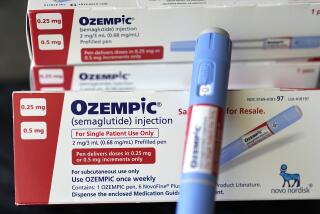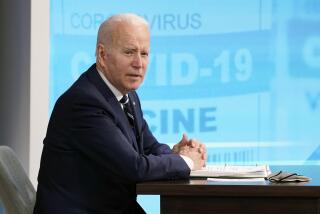Survey Finds Sharp Drop in Employer-Paid Insurance
WASHINGTON — The percentage of Americans with employer-paid medical insurance has dropped sharply in 10 years and the trend is accelerating, the Clinton Administration said Wednesday, as it released new Census Bureau data sure to fuel the health care reform debate.
According to the bureau’s employee benefits survey of 30,000 workers, only 61% had employer-provided medical coverage, down from 66% in 1983. The rate of decline was steeper among workers at large companies than those at small firms.
“It’s not a stable system. Employers are providing less and less,” Labor Secretary Robert B. Reich said at a Capitol Hill press conference. “All workers are vulnerable.”
Such rapid erosion “makes a very strong case for strengthening the employer-based system,” he declared. “It is time for all employers to share in this burden.”
But opponents used the same data to argue for solutions other than President Clinton’s proposal to force all employers to provide insurance to workers.
“Given those trends, is the employer mandate realistic? Can’t we try some other means to encourage employers to provide benefits?” asked Sharon Canner, a National Assn. of Manufacturers analyst.
The Census data showed that since 1979 coverage has declined from 83% to 73% of the work force at firms with 100 or more workers. Over the same period, coverage declined from 60% to 54% at firms with fewer than 100 employees.
“This is across the board. This is not solely a small-firm phenomenon,” Reich said. “If anything, large firms are beginning to get out of the health care business.”
He said the data represent “the most comprehensive view that we’ve had yet.”
The President has defended the employer mandate--the most controversial element of his reform agenda--as a conservative approach that builds on the existing system, noting that the overwhelming majority of privately insured Americans get their coverage through the workplace.
To achieve his goal of universal coverage, Clinton would require all employers to pay at least 80% of a full-time worker’s premiums, up to a cap of 7.9% of total payroll. Small firms with low average payrolls would receive government subsidies, reducing their “contribution” to as little as 3.5% of payroll.
The President’s bill also would require individual workers to pay up to 20% of their premiums, or no more than 3.9% of their wages.
But many big and small businesses, as well as most congressional Republicans and even some Democrats, strongly oppose any mandate. So any significant health care reform will require major compromises on both sides.
Opponents of mandates, such as the Chamber of Commerce and the National Assn. of Manufacturers, prefer voluntary incentives and a gradual extension of coverage to the estimated 38 million uninsured Americans. Like Clinton, however, they support malpractice reforms, administrative simplification to reduce costly red tape and insurance market reforms that ban discriminatory practices against small groups, particularly people with pre-existing conditions.
At his press conference, Reich rebutted questions that challenged the wisdom of building upon a system that even the Administration says is in rapid decline.
“This is still a health care system that is premised upon employer contributions,” Reich said. That system may be “ailing,” he conceded, but it remains “the bedrock of America’s health care system.”
More to Read
Inside the business of entertainment
The Wide Shot brings you news, analysis and insights on everything from streaming wars to production — and what it all means for the future.
You may occasionally receive promotional content from the Los Angeles Times.










